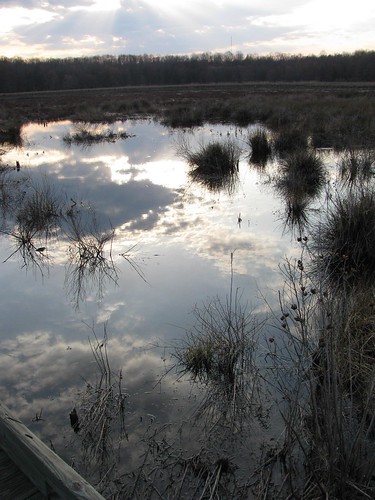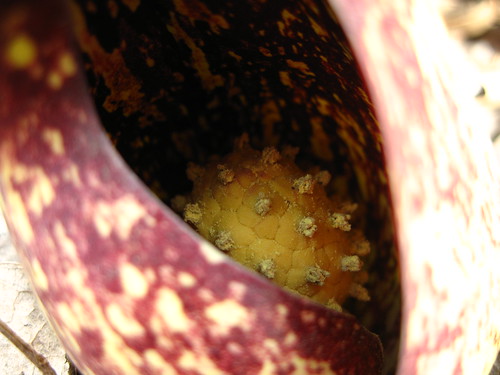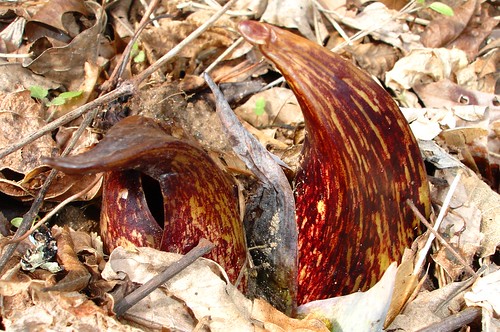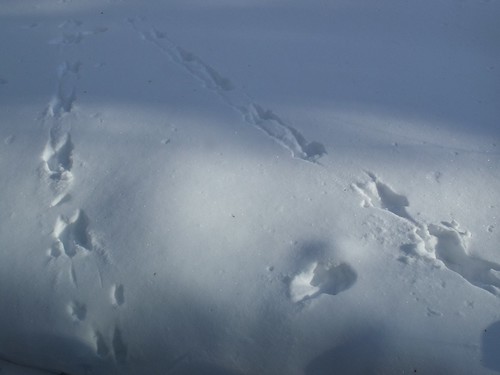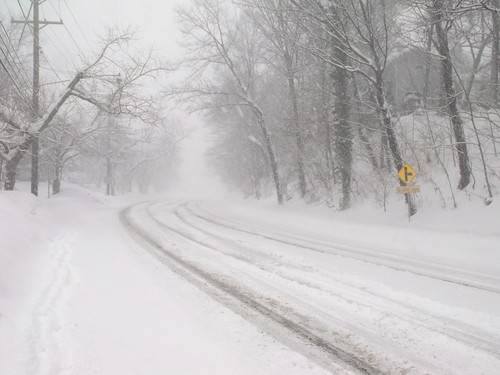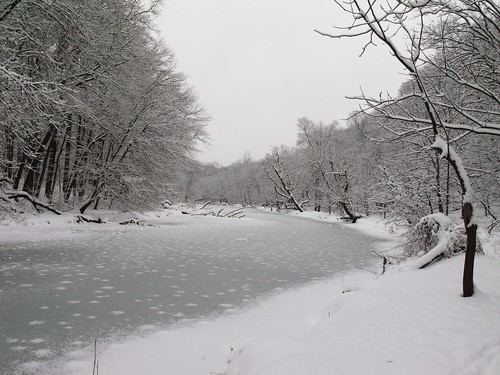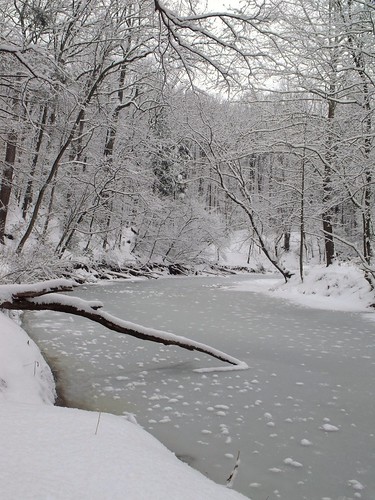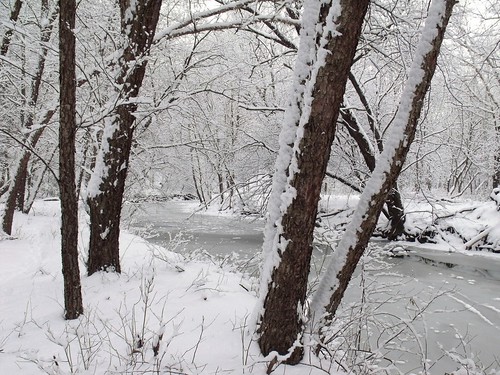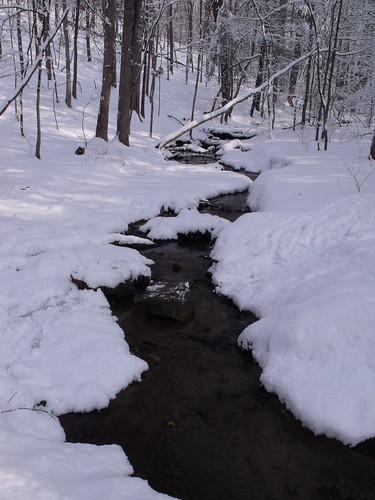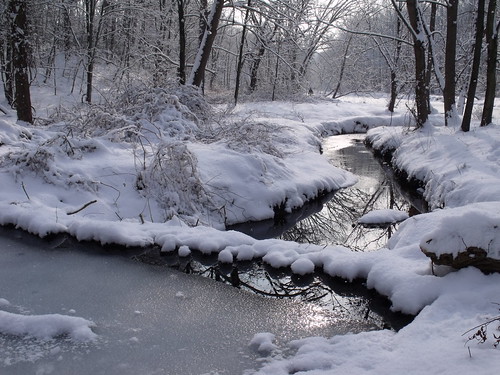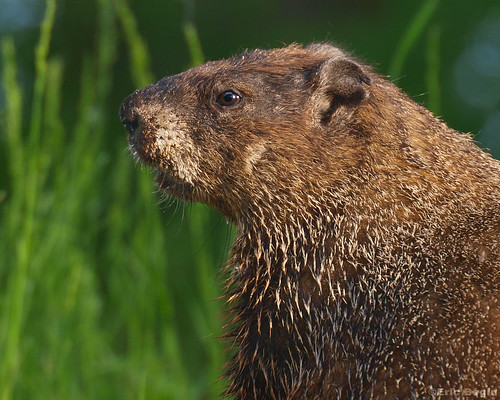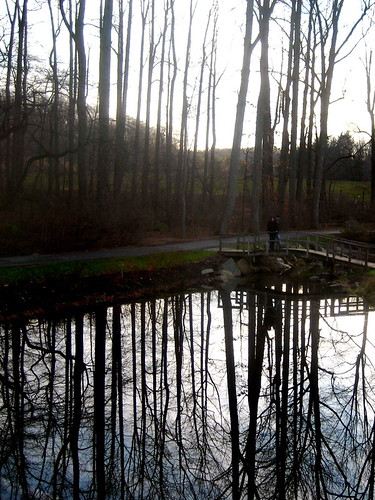
At 536 acres, Wheaton Regional Park is one of the largest parks in Montgomery County, and probably the most diverse in recreational opportunities. On the western edge of the park is a humongous playground area,
a 1915 carousel, and a kids' train. On the south side of the park, there is an athletic complex, an
ice skating rink, and
a half-acre dog park. To the north are
stables and the beautiful
Brookside Gardens (which deserves its own post).
And surrounded by all this recreational development?
The woods. Wheaton Regional Park boasts 11 miles of trails, with about half being paved and half unpaved (see the
park map). Those trails also link up to the
Northwest Branch trail and the paved
Sligo Creek trail, expanding your options far beyond the park.
Stop by
Brookside Nature Center for some guaranteed critter sightings -- they usually have some box turtles and other reptiles and amphibians inside. They've also got interactive stations along the boardwalk that leads up to the nature center, including bird songs and smells for you to identify.

The Nature Center also leads lots of activities. Coming up this weekend (Feb. 20-21): their
Maple Sugar Festival (11:00-3:00 Saturday and Sunday, rain or shine). Start out with a movie and a short talk on the process of sap and making syrup at the nature center. Then head down the trail to a historic log cabin, where you can see trees that have been tapped, then watch the sap boiling over an open fire. Perhaps most importantly, you can compare the taste of homemade maple syrup against commercial brands on (silver-dollar-sized) pancakes. It's all free, and it's a great excuse to come check out some of the other things this great park has to offer.
 Hiking:
Hiking: Our favorite trails are the unpaved network of trails (purple on the
park map) that link into the Brookside Nature Center. Pine Lake is also nice, and contrary to what the map shows, it is possible to walk all the way around it if you're willing to brave a little mud.
Bikes: Are allowed on the paved trails and some of the unpaved trails, but not the ones immediately around the Nature Center (this is noted on trail markers). There are sometimes large trees down in some of the trails; be prepared for the possibility that you may have to get your bike over a tree, or turn back around.
Dogs: Are allowed in most of the park, on leash, but are not allowed in Brookside Gardens.
Fishing: Is allowed in Pine Lake, with a Maryland fishing license.
 Getting there by public transportation
Getting there by public transportation: Glenmont Metro is about a mile away from the entrance to Brookside Gardens and the playground entrance. There are bus routes that can get you even closer.
To the Brookside entrance (#2 on the
park map): Catch Ride On bus
10 or Metrobus
C8 -- they will take you to the intersection of Randolph Road and Heurich Road, about .2 miles from the Brookside entrance.
To the playground entrance (#1 on the
park map): Glenmont Metro station is about a mile away. You can catch Metrobus
Y8/9 to the intersection of Georgia and Shorefield, about .3 miles from the park entrance.
If you're going on a weekday, you can also catch a bus that will leave you on the eastern edge of the park. You want Ride On bus
31, which runs between Glenmont and Wheaton. It has stops along Kemp Mill Road at Randolph Road (near the horse stables, #5 on the
park map) and also at Kemp Mill Forest Road (not shown on the map).
Like the photos in this post? Mouse over for credits; a click takes you to the photographer's website.



